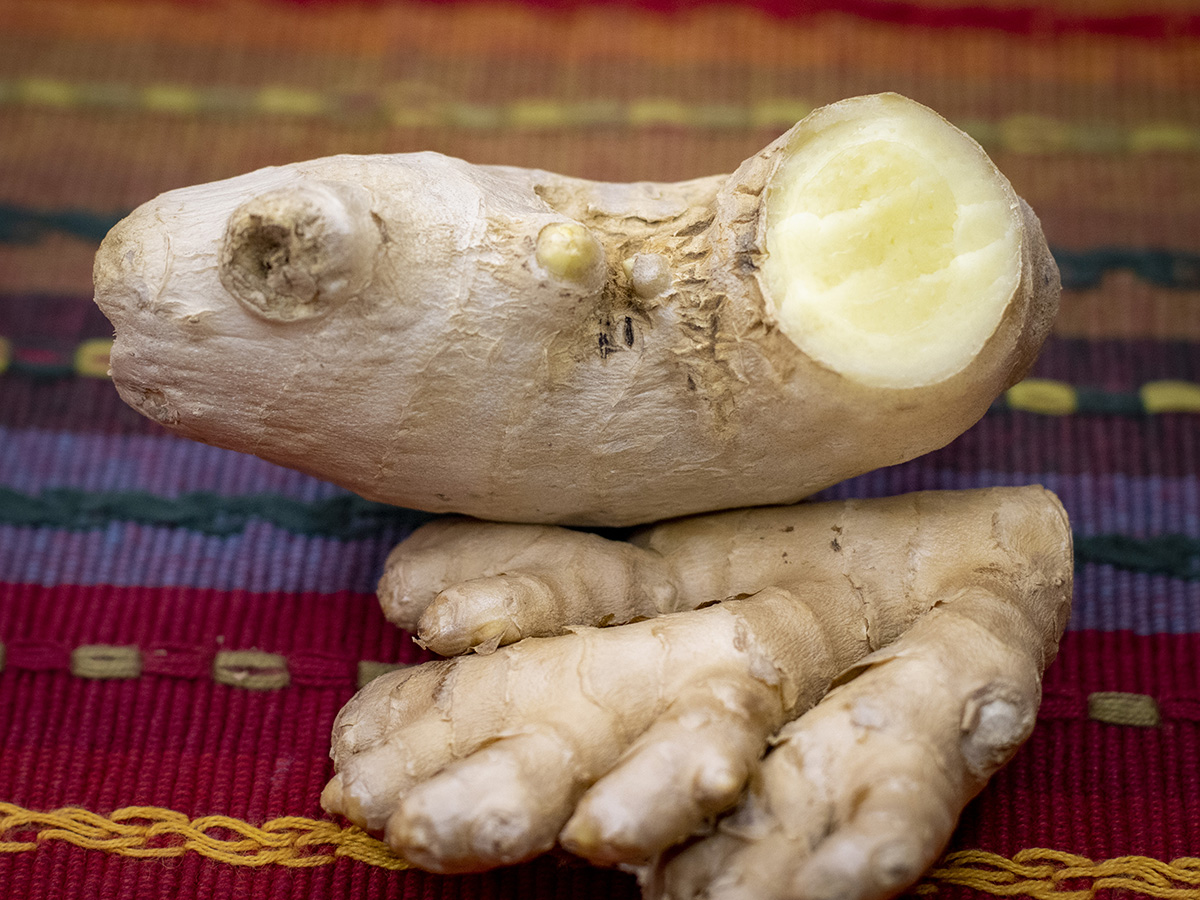Spice up the Holidays

Photo by Deborah Maier
In December, traditional activities of the season include decorating gingerbread houses and cookies. For me, it is baking gingersnap cookies. The blend of the sweetness of the sugar and the tanginess of the ginger spice makes them a favourite seasonal treat. And there is the delightful aroma. Ginger and other spices in baking and holiday cooking make a home smell festive.
What is a spice? Edible plant leaves are the source of herbs. Spices are gathered from other parts of the plant: bark, flowers, roots, and seeds. The ground spice ginger comes from the rhizome of the plant Zingiber officinale. To make the spice, the rhizome is harvested, washed, peeled, sliced, dehydrated, and then ground into a powder.
You can make your own ground ginger from a piece of fresh ginger purchased at the grocery store. You can even grow your own ginger plant. For either use, select the freshest piece of ginger that you can find. A fresh piece of ginger will have smooth skin and, especially in the spring, display whitish growth nodes.
To make ginger powder, wash the ginger. If it is really fresh, the peel can be left on. If the rhizome has been stored for a while the skin will be more fibrous and tough and, for a better-quality spice, should be removed. Slice the rhizome into thin, evenly-sized pieces. Dry the pieces spread out in a dehydrator or low-temperature oven (150 °F), until the slices snap when pressed. It usually takes at least a couple of hours to reach this state of dryness. Grind the slices in a spice, coffee, or nut grinder or in a small food processor. Keep the powder in a spice jar or small airtight container until it is needed.
If you want to grow a ginger plant, fill a long, shallow planting container with a rich, well-draining potting mix. Place the fresh rhizome on top, push down to nestle it in the medium, then cover it with a centimetre of the potting mix. The rhizome system grows horizontally, which is why a long container works better than a deep one.
Gingers are from moist tropical regions. They need regular watering and prefer their growing medium kept evenly moist. However, it is one plant that will tolerate being over-watered occasionally. Place the pot in a warm location, with bright indirect light, and away from cold drafts, electric heaters, or hot air vents.
I have grown ginger plants from rhizomes a couple of times with moderate results. It usually grows a few stems before going dormant again. I think the plant would appreciate a more humid environment than Calgary offers. To provide a bit more humidity, the last time I grew one, I used sphagnum moss for the growing medium.
I did not notice any difference in the growth when using a potting medium, but it was tidier and made it easier for me to check on how the roots were developing. Sphagnum moss, however, does not provide nutrition, so I should have provided supplemental fertilizing. It has been fun experimenting with growing the plant. I’m getting ready to try again.
This time, I am planning to use a self-watering container, so it can have good access to moisture without constant monitoring. I will place it higher on the plant shelf to give it a bit more warmth. I will also try to remember to add some plant food when I water.
If you need ginger, instead of heading to the spice aisle, go to the produce section and check out the fresh ginger. You can use fresh grated ginger in cooking instead of the powder (1 tablespoon freshly grated equals a quarter teaspoon powder). Look for a piece that has a growing node that you can use for planting and start your own ginger plant this winter.
To learn more about growing in Calgary, visit the Society’s website calhort.org.
